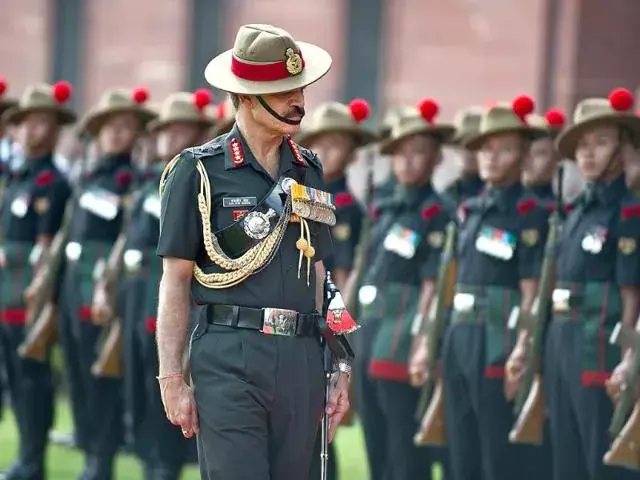
Eligibility Criteria
Age Limit : Applicants age must be between 16 -19 ½ Years. See more details in notification.
Educational Qualifications:
- For Army wing of National Defence Academy: 12th Class pass of the 10+2 pattern of School Education or equivalent examination conducted by a State Education Board or a University.
- For Air Force and Naval Wings of National Defence Academy and the 10+2 Cadet Entry Scheme at the Indian Naval Academy: 12th Class pass of the 10+2 pattern of School Education or equivalent with Physics and Mathematics conducted by a State Education Board or a University.
Candidates who are appearing in the 12th Class under 10+2 Pattern of School Education or equivalent examination can also apply for this examination.
How to Apply:
- Put the following web address in browser- upsconline.nic.in (UPSC Official Website).
Selection Process:
- Written Exam
- SSB Selection Test
- Medical Examination
Written Exam:
The National Defence Academy written exam is divided into 2 parts:
- Mathematics (300 Marks)
- General Ability (600 marks)
- English
- Current Affair
- Maths
- Physics
- Chemistry
- Biology
- History
- Geography
- Current Affair
- Polity
Thus, in total, written exam carry 900 marks.
SSB Round
Day 0: Reporting Day
On the day candidate has to report, he has to follow the instructions as mentioned in the SSB call letter. Generally, the candidate has to report at the railway station in the morning between 7 Am – 8 Am, and from there, candidates are escorted to the board by one of the SSB officials. On the very same day, candidates are made to sit in the testing hall where they have to present their educational documents for verification and are allotted a number (called chest number) by which they will be able to identify the candidates throughout the process. A briefing about the schedule, various tests and general instructions shall be given.
Day 1: Screening test – Stage I
On Day 1, stage one of testing is administered. This includes a verbal and non-verbal intelligence test (About 50 questions each) and then a Picture Perception and Description Test (PPDT). In this test, a picture, either clear or hazy is shown to the candidates for 30 seconds. Each candidate observes it and then, in the next minute, must record the number of characters seen in the picture. Then within a given time, each candidate must write nearly seventy words, make a story from the picture (not just describe the picture). The candidate must record the mood, approximate age and gender of the first character they saw, known as the “main character”. In stage two of the PPDT, the candidates are given their stories which they may revise. Each candidate in the group must narrate his or her story within one minute. The group is then asked to create a common story involving each of them or their perceived picture stories.
After the completion of these tests, unsuccessful candidates are dismissed. Other candidates are short-listed. They must complete the first of the five personal information questionnaires which must be recorded in the same manner. The personal information questionnaire is the main basis for the individual candidate interview.
Day 2,3,4: Psychology test, GTO tasks, and Personal Interview – Stage II
On Day 2, a thematic apperception test (TAT) or picture story writing is administered. It is similar to the PPDT, but the picture used is clear. Again the candidates are shown a picture for thirty seconds and then write a story in the next four minutes. Twelve such pictures are shown sequentially. The last picture is a blank slide inviting the candidates to write a story of their choice. Candidates do not need to remember the number of characters in each picture and there is no group discussion.
The next test will be the Word Association Test (WAT). The candidates are shown sixty simple everyday words in sequence. Each is shown for fifteen seconds. For each word, the candidates write the first thought that comes to mind in response to the word. Other tests administered on day two are the Situation Reaction Test (SRT) in which a booklet of 60 situations is given in which the responses are to be completed in 30 minutes and finally the Self Description Test (SDT) which consists of 5 questions asking about parents’, teachers’/employers’, friends’ and candidates’ own perception.
On days 3 and 4, Group test is conducted by a GTO (Group Testing Officer) On the third and fourth days, there are tasks including group discussion; group (military) planning exercises; progressive group tasks; small (half) group tasks; individual tasks (obstacles); group obstacle or “snake race”; command tasks; a lecturette with four heads; two group discussion on current as well as on social and personal topics and a final group task. Along with GTO, an individual candidate interview is conducted by the interviewing officer. It is based on the personal information questionnaires filled by the candidates on day 1 and other general and defense knowledge.
Day 5: Final assessment and results (Conference)
On day five, All the officers in proper uniform will attend a conference with each candidate. They will also have a conversation with a panel of assessors. The assessors will look for confidence and expression when speaking; a positive attitude in adversity and in life; honesty. Following this, the final results are announced. Successful candidates will remain for an intensive medical examination which takes four to five days at a military hospital.
Medical Test
After qualifying SSB round, the candidate has to appear for a medical test. Once the candidate quality the medical test, he is declared as a passing candidate by Union Public Service Commission. The whole list of passing candidates is published on the website of UPSC.

